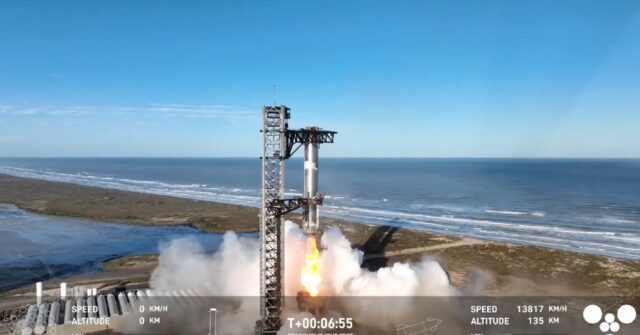SpaceX's Starship Explodes Mid-Flight Over Atlantic Ocean

The Spin
Pro-establishment narrative
The successful catch of the Super Heavy booster demonstrates significant progress in SpaceX's reusability goals. The collection of vital test data, even from failures, advances the development of reliable space transportation systems. The company's rapid iteration approach and willingness to push engineering limits show promising advancement toward commercial space travel.
Establishment-critical narrative
The loss of another Starship prototype raises concerns about the program's reliability and safety, particularly given the disruption to commercial aviation and the potential risks of falling debris. The repeated failures highlight the challenges of developing such an ambitious spacecraft and question the feasibility of future lunar missions and eventual Mars colonization.
Metaculus Prediction
There's a 50% chance that SpaceX's Starship will carry a human to orbit by July 2027, according to the Metaculus prediction community.



